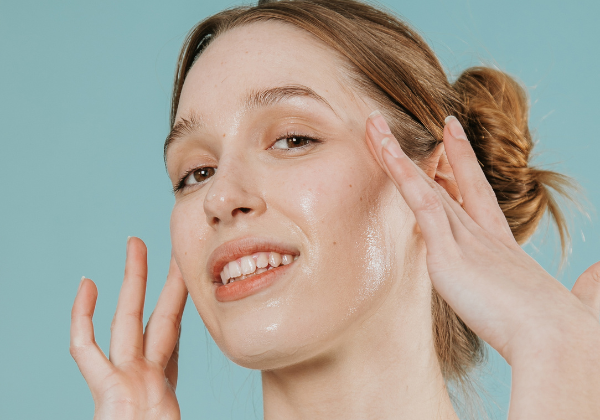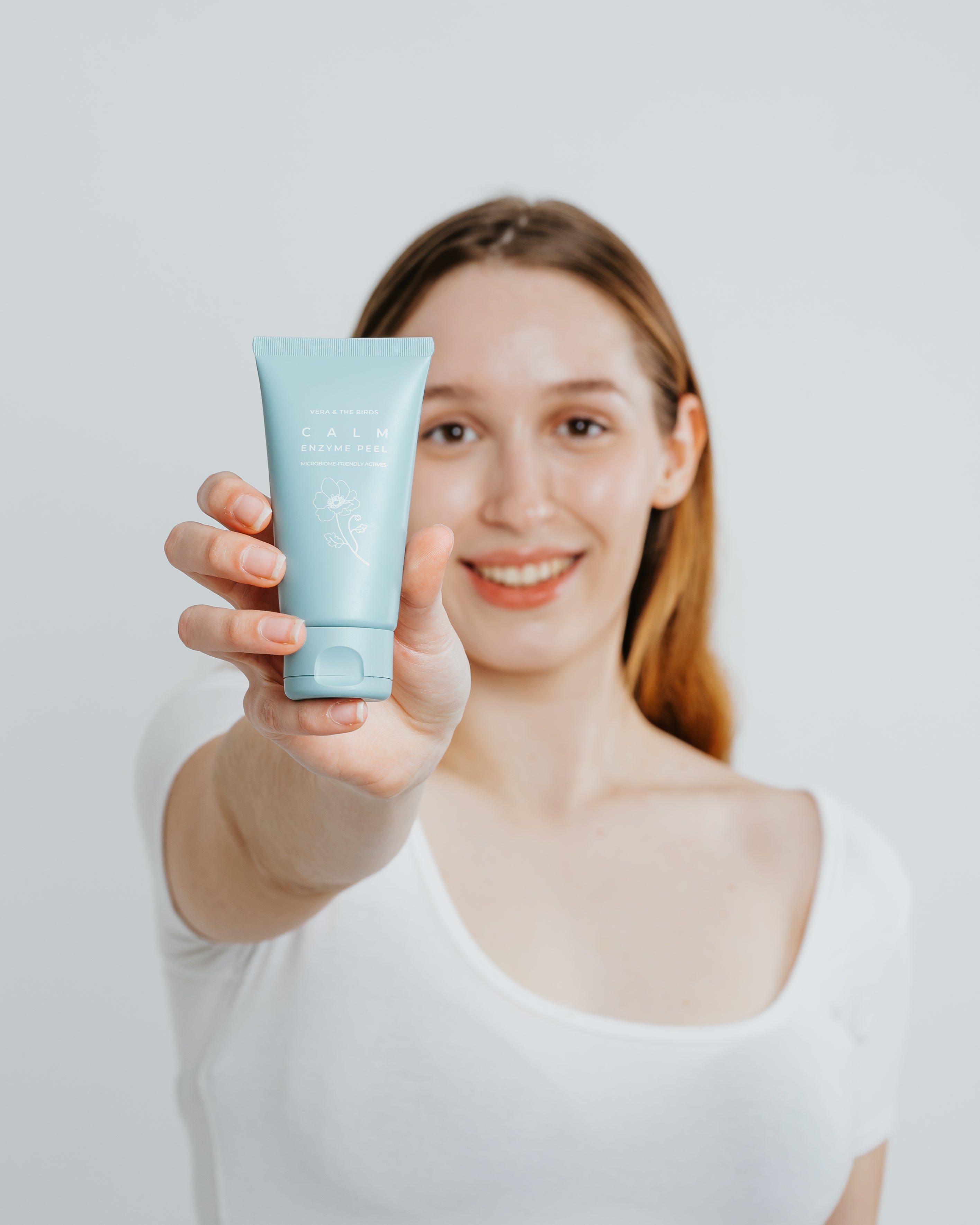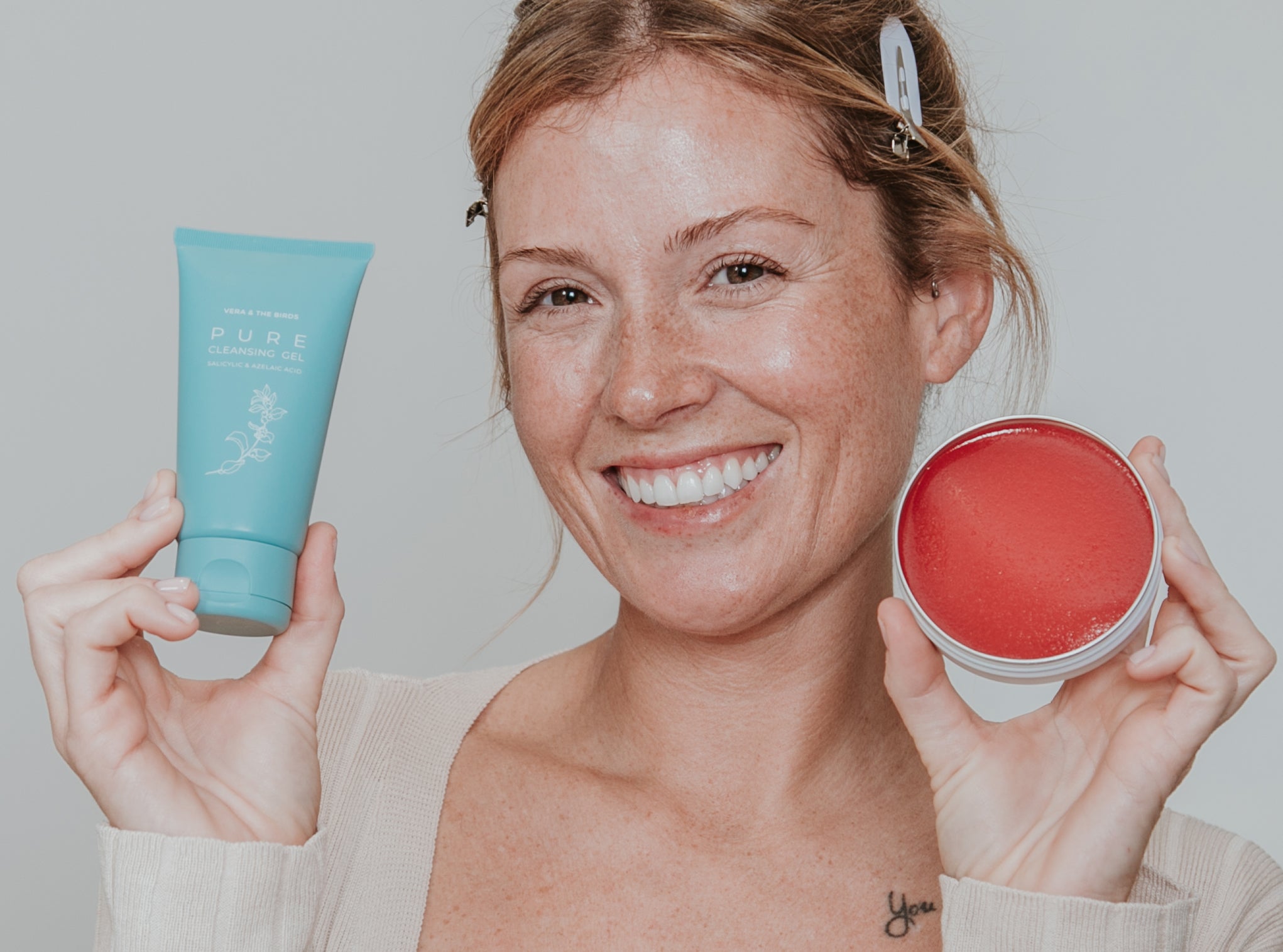We are 50% bacteria: the role of the microbiome in our skin

What about 50% bacteria? It sounds very crazy but it's true. Microorganisms such as bacteria, protozoa, yeast and archaea are part of us. In fact, they represent 50% of our identity . Let me explain to you.
Words like microbiome, microbiota, microflora surely sound familiar to you. It's on everyone's lips. But not everyone knows what they are.
And the concept is relatively recent. It began to take shape when the first phase of the ' Human Microbiome Project ' research project ended, a program whose mission was - putting it very simply - to map the bacteria that lived in our body and try to explain the relationship between them, our health and certain diseases.
We are still in the process of understanding how we interact with the microorganisms that live in us, but what we do know is that it is a complex and constant relationship: they can regulate our mood, activate our immune system, and help us digest food. It is something like an expansion of ourselves.
Microbiome and microbiota, are they the same?
We make a small section to clarify the concepts microbiome and microbiota, very similar but not exactly the same.
- The microbiota is the entire community of microorganisms that reside in a certain habitat, be it the skin, colon, mouth, etc.
- The microbiome is those microorganisms and also all their genes and chemicals that they generate in their life cycle, that is, the entire habitat.
To illustrate it as a metaphor, if the microbiota is the trees, the microbiome is the entire forest, with everything that lives in it: with its air, its rivers, its land full of bugs.
There is also the concept 'microflora' (or 'flora' if we talk about the intestinal flora) but a large part of the scientific community does not consider it 100% appropriate because 'flora' refers to plants, when in reality bacteria are not plants, They are microorganisms.
The delicate balance of the skin microbiome
The skin could not be immune to all this party and also has its own microbiome. Our skin surface is full of microorganisms that act as a shield and protect us from external agents such as ultraviolet radiation or pollution. We live in symbiosis with our microbiota: bacteria offer us protection against possible pathogens that want to enter and in exchange we 'pay' them with food and a place to live. A curious fact: each individual has their own microbiome, it is something personal and non-transferable.
When this delicate balance is broken , that is when problems begin: our skin can become more sensitive, acne breakouts appear, etc. Hence the importance of taking care of our skin with cosmetics that help preserve the balance of the skin microbiome.
For example, a critical moment for caring for our skin's microbiome is when we wash our face, we can alter its pH and break the balance of the microbiota that inhabits our skin. That is why it is important to use non-aggressive cleansers, without surfactants or with mild surfactants, such as the Foaming Facial Cleanser , formulated with a non-ionic vegetable surfactant that respects the natural balance of the skin.

Exfoliate with care
When we exfoliate, it is also a very delicate moment, because there we are forcing the skin to shed a layer that, although it is dead cells that our skin does not need at all, somehow acts as a barrier. The skin underneath is vulnerable and exposed to environmental attacks . That is why it is important to perform an exfoliation that is respectful of your skin without losing effectiveness.
In our new Calm Enzyme Peel we have included two microbiome-friendly active ingredients: dextrin and propanediol. Dextrin is a calming agent from corn starch that preserves the diversity of the skin microbiota and reduces the pro-inflammatory marker IL-1α. It is very soothing and is capable of significantly reducing redness within ten minutes of applying it to the skin.
Prebiotics, probiotics and postbiotics
As if there weren't enough names, we add to the list three more concepts that are surely familiar to you and that play a fundamental role in the health of our body: prebiotics, probiotics and postbiotics.
A probiotic is what we commonly know as 'good bacteria' , that is, they are microorganisms that live in symbiosis with our body and therefore provide it with a benefit. They are essential for the proper functioning of our intestine, hence the importance of consuming foods rich in probiotics such as kimchi, kefir, kombucha (mmm, have you noticed that they all start with the letter 'k'?) since they go to help keep 'bad bacteria' at bay.
Prebiotics are the food for probiotics, that is, what these good bacteria eat. And postbiotics are metabolic products derived from the reactions obtained by prebiotics and probiotics.
And as far as the skin is concerned, they are all essential for its proper functioning: they help its optimal balance and increase the resilience of the skin barrier.



Leave a comment
This site is protected by hCaptcha and the hCaptcha Privacy Policy and Terms of Service apply.